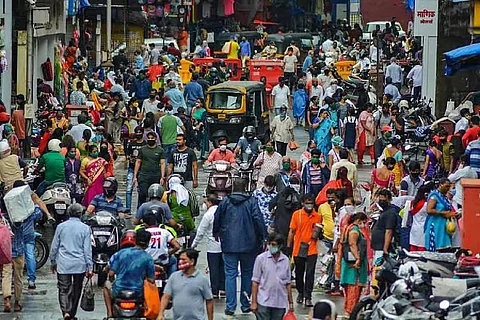

A recent study has found that 26.4% of India’s population remains below the poverty line, a figure that challenges the Union government’s claim that poverty has dropped to just 5%. The study, which was published in the Review of Agrarian Studies, suggests that official estimates may be underreporting the true scale of poverty in the country.
Using data from the Household Consumption Expenditure Survey (HCES) 2022–23, the study, conducted by researchers CA Sethu, LT Abhinav Surya, and CA Ruthu, applies the Rangarajan Committee’s methodology, which accounts for rising costs of food, housing, healthcare, and education. The results indicate that poverty remains a widespread issue, despite government claims of economic progress.
In February 2024, the Government of India released a factsheet from HCES 2022–23, with NITI Aayog CEO BVR Subrahmanyam claiming that poverty had declined to just 5% of the population. Other reports, using inflation-adjusted figures from the 2011–12 poverty line, estimated poverty at 10.8%. However, these methods have been criticised for failing to account for crucial changes in economic conditions, survey methods, and consumption patterns.
The new study argues that official methods underestimate poverty by relying on outdated benchmarks and flawed assumptions.
How many people in India are still poor?
The researchers calculated new poverty thresholds to determine how many people in India are still struggling to meet their basic needs. According to their study, a person in rural India needs to spend at least Rs 2,515 per month to stay above the poverty line. In urban areas, where living costs are higher, the minimum requirement was found to be Rs 3,639 per month.
Using these updated poverty lines, the study found that 27.4% of people in rural areas and 23.7% of people in cities are still living in poverty. When combined, this means that 26.4% of India’s total population does not earn enough to meet basic expenses like food, housing, healthcare, and transportation.
These numbers are much higher than the government's claim that poverty has fallen to just 5%.
Flaws in official estimates
As per the study, the main reason for the huge difference in poverty estimates is how the government measures poverty. The government takes an old poverty line from 2011–12 and adjusts it for inflation using the Consumer Price Index (CPI). This means they assume that if people could afford Rs 1,000 in 2011, they only need a slightly higher amount today to afford the same basic needs.
These are some of the flaws in such a method, according to the latest study:
It does not consider the rising costs of essential non-food items—over the past decade, expenses like healthcare, education, rent, and transportation have increased much faster than food prices. The government’s method does not fully account for this.
The price index itself is outdated—the CPI is based on an old consumption pattern, meaning it may not reflect what people actually buy today. Since there was no official poverty survey between 2011–12 and 2022–23, the CPI weights were not updated for over a decade.
The new study avoided these loopholes by calculating a fresh poverty line based on the latest data from the Household Consumption Expenditure Survey (HCES) 2022–23. Instead of relying on old numbers, the researchers checked how much money people actually spend today to meet their food and non-food needs.
What is the Rangarajan Committee?
In 2012, the Planning Commission set up the Rangarajan Committee to revisit how poverty is measured in India. This was in response to criticism of the earlier method proposed by the Tendulkar Committee in 2009, which defined poverty based on per capita consumption and calorie intake. Many felt that the poverty line it set was too low, failing to reflect the real cost of living. To address these concerns, the Rangarajan Committee was given the task of coming up with a more accurate and comprehensive way to estimate poverty.